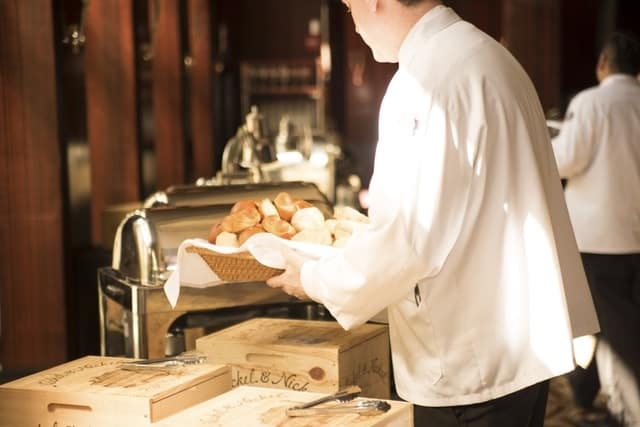Following an ever-changing economic climate, we hear of both success and disaster stories with regards to recruitment and employment. We are always trying to predict the market, but do we have any evidence to support claims on what the future could hold?
Catering equipment provider Nisbets has carried out some research into what recruitment and employment look like in the catering and hospitality sector. They have compiled some unique insights into the industry…
The respondents
Of the 1,323 respondents to the survey, the majority of them worked in a restaurant (18%). When asked to describe their place of work, they fell into the following categories:
- 17% worked in a café.
- 15% described their place of work as a pub/bar.
- 9% worked in takeaways.
- 5% were contract caterers.
- 5% worked in hotel or guest accommodation.
- 3% described their workplace as residential or a care home.
- The public sector, such as schools or hospitals accounted for 3%.
- 25% of respondents worked in other fractions.
Are there any industry concerns?
The highest percent of respondents (20%) said they were most worried about standing out from the competition. Not far behind, 15% of respondents said a main concern was their service from suppliers, and another 15% mentioned their brand reputation as a concern. Others included:
- 14% concerned about the cost of ingredients
- 11% identified the increased living wage
- 10% worry about retaining staff
- 8% were concerned about the shortage of qualified kitchen staff
- 7% were worried about job security
Recruitment methods
When asked what was the most effective method for recruiting, 41% of respondents named word of mouth. 21% of respondents named the free method of social media promotion one of the most effective. Free methods can often be just as effective as paid. Others include:
- 12% found their own website most efficient for recruitment
- 9% preferred recruitment websites
- 7% relied on recruitment agencies to promote opportunities
- 5% used online classifieds
- 5% used print classifieds
Staff training
66% of respondents believe learning on the job is a better way to learn the trade than going to culinary school. Only 34% favoured culinary school for training. A good way to implement training on the job is to employ a round of apprentices who can then learn from scratch both the trade and your business’s best practices from day one.
Do the chefs entering the trade have realistic expectations of life in the kitchen?
- 82% of the respondents answered no
- 18% answered yes
If you’re recruiting, make sure that life at your workplace is spelled out for applicants. The job vacancy should include a detaild job description and a good insight to what the company is all about, and what is expected from the applicant. It’s also useful to include an induction process to give the new starter the best chance for a good start.
Does the media accurately represent real world kitchens and life as a real chef?
- 69% of respondents answered yes
- 23% answered no
- 8% answered not sure.
What are the most important factors in staff retention?
- 16% answered with colleague relations
- 16% answered with working environments
- 14% listed work/life balance
- 13% pay
- 12% mentioned shift patterns and hours
- 11% thought training opportunities were important
- 10% mentioned opportunities for career progression
- 8% said employee benefits
Try to make a concerted effort to make your workplace a happy, enjoyable and welcoming environment, and arrange regular staff events to bond everyone as a team both in and outside of work hours. You want your staff to be happy about coming to work, it makes the place a better place for all your employees.
Costs
With 31% of respondents revealing they would operate their company in the same way after the introduction of National Living Wage, other respondents have something else in mind. 22% said they’d implement stricter budget control, 17% said they would have to increase their prices, 16% said they’d improve the company’s product or service offering to generate revenue, 7% said downsizing the workforce and 3% reducing staff benefits.
You need to find a way to make it work for your organisation – establish your current expenditure and work out the areas you can save and budget with to accommodate the NLW. Consider how you can improve your product offering to bring in more custom.
55% of respondents said the introduction of the National Living Wage had had no impact on their company, whilst 31% believed it had had a negative impact, and 14% had noticed a positive impact in the short term.




